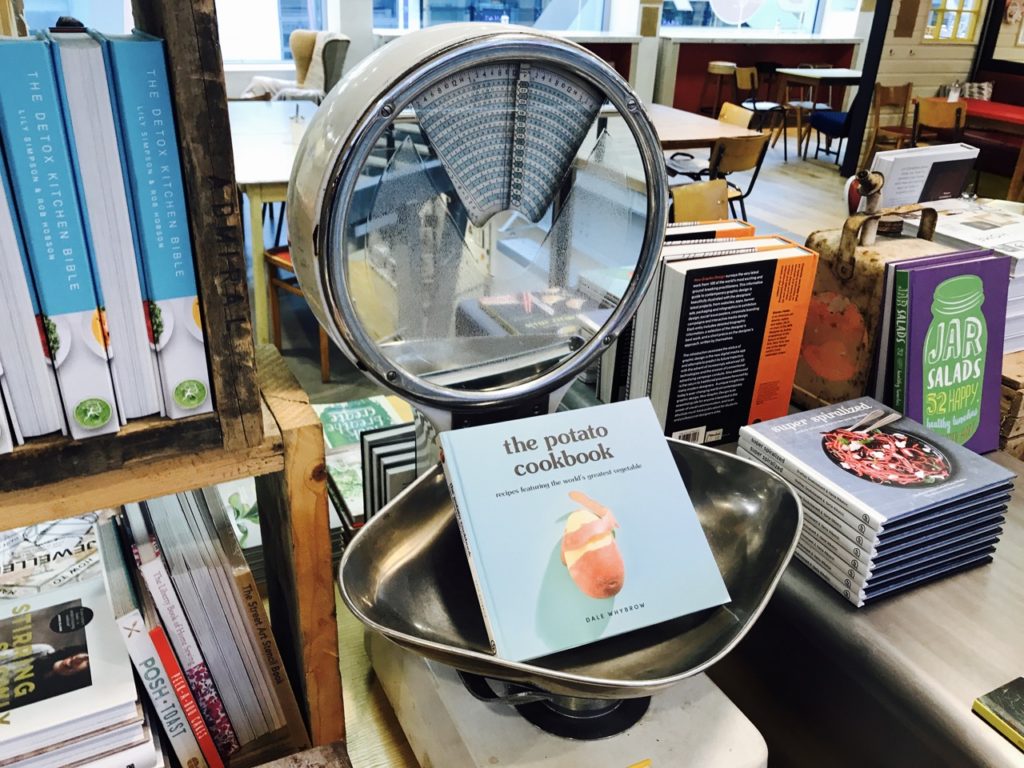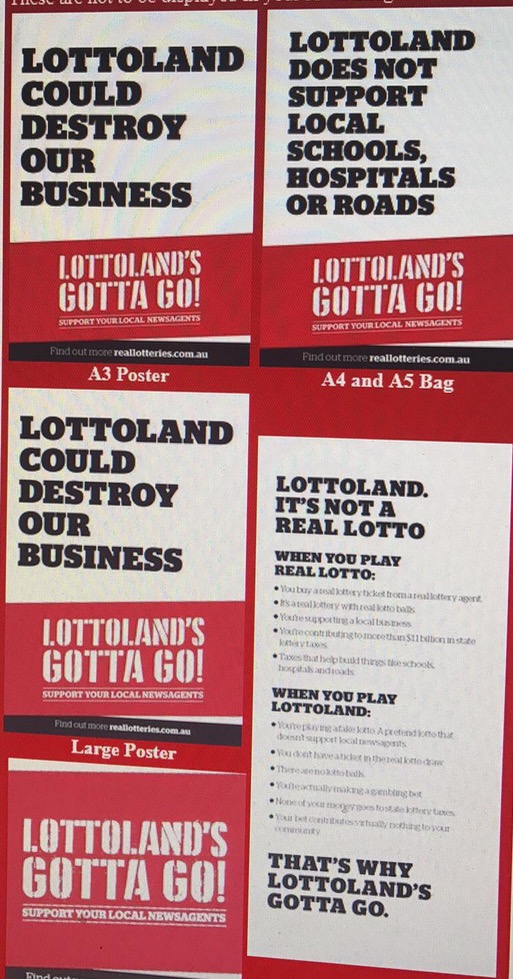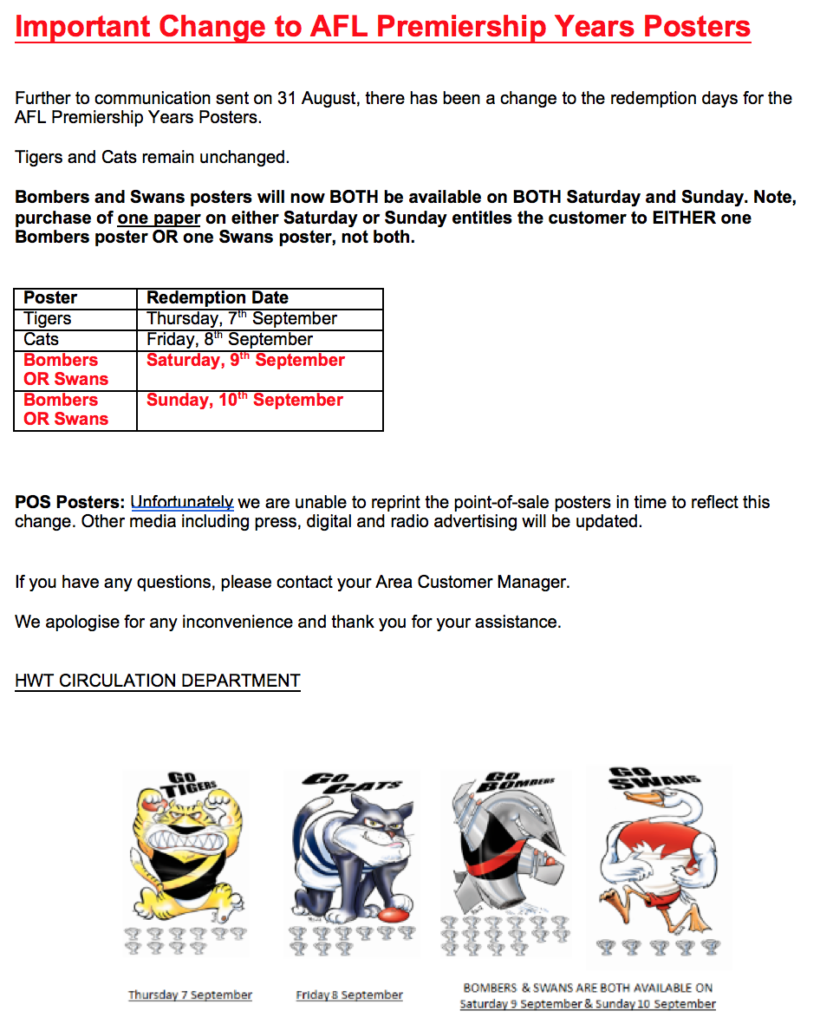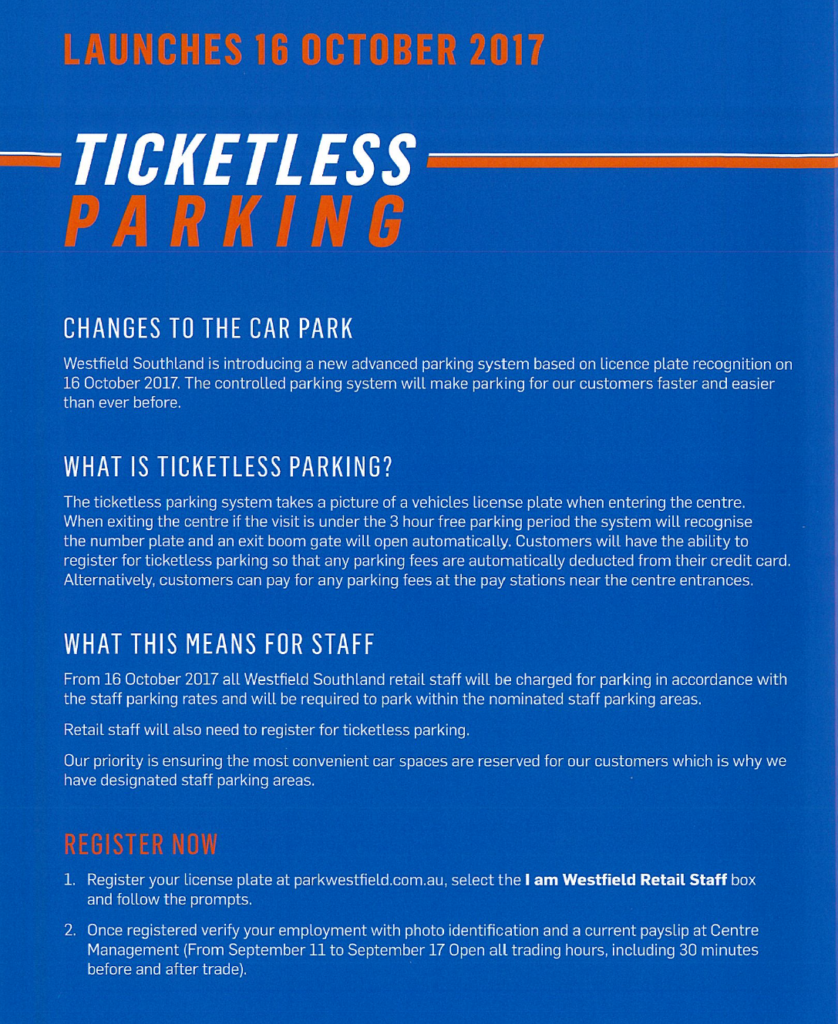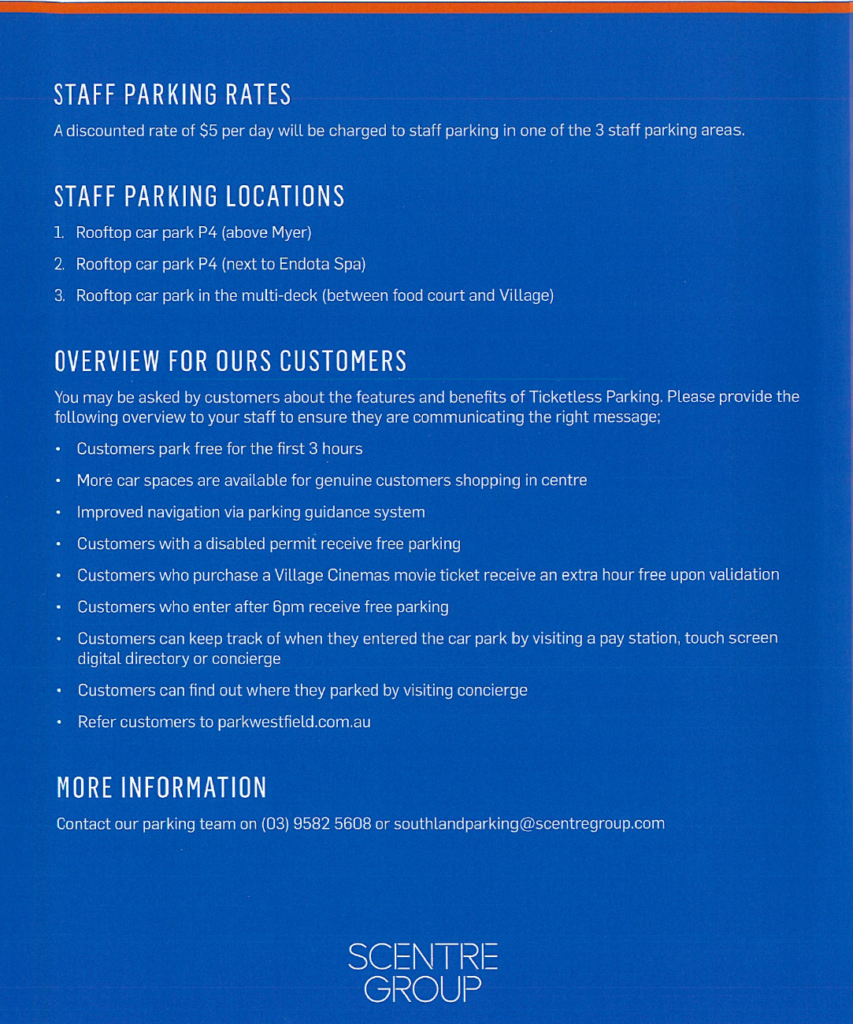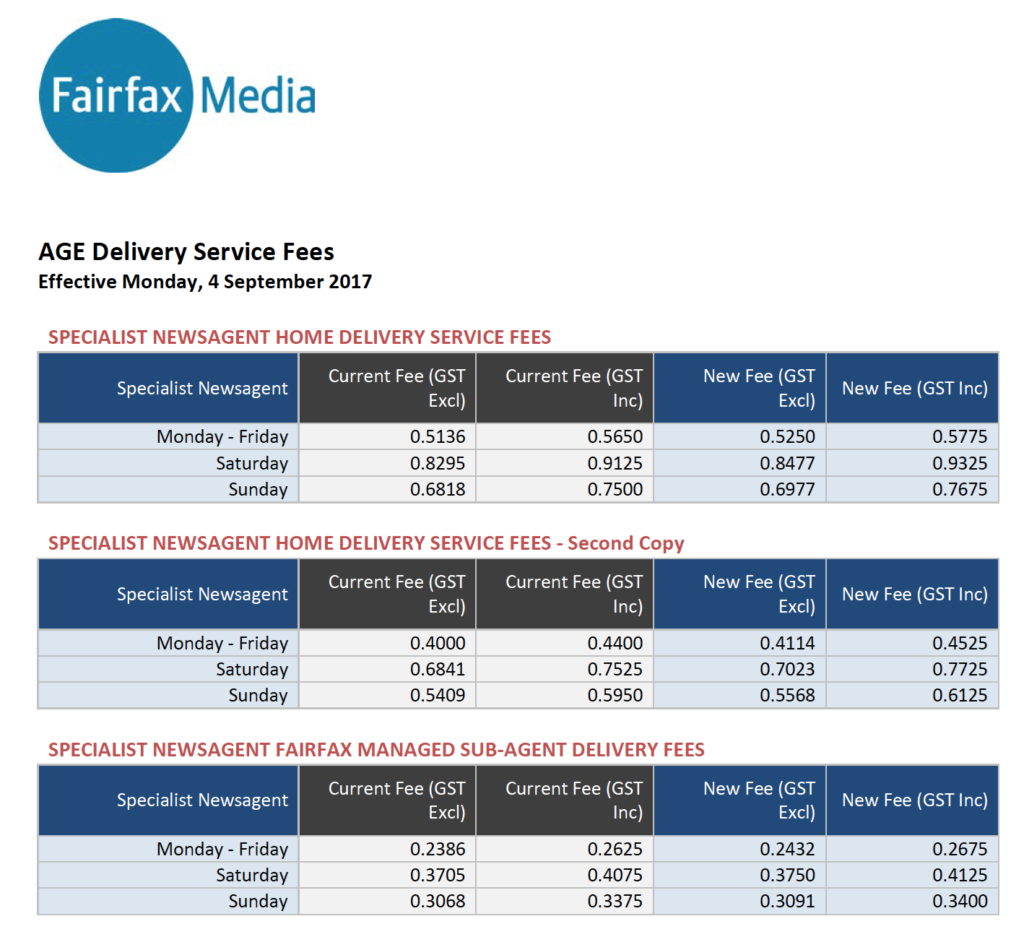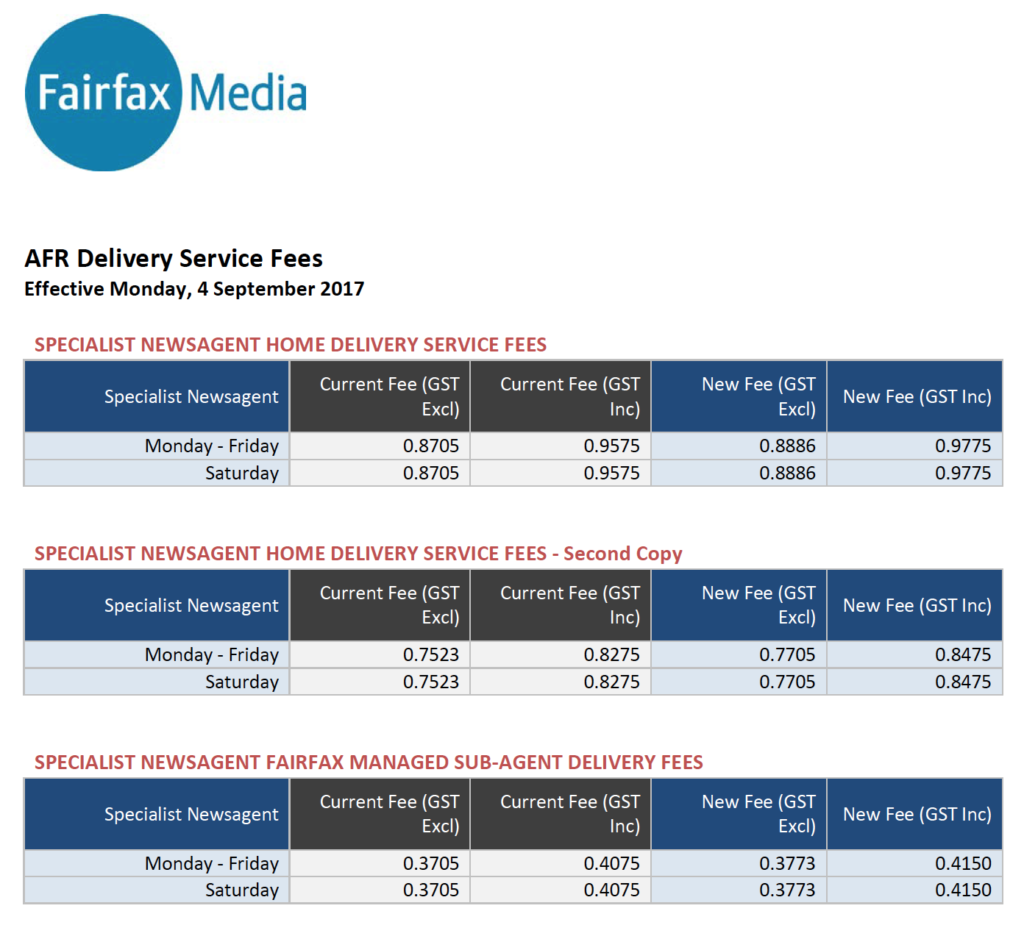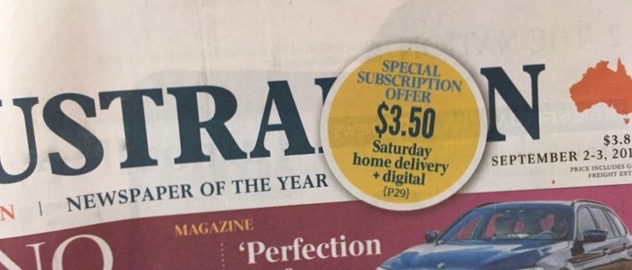Newsagency mareting tip: preference suppliers who promote you
Before you take on a new supplier, ask them what they will do to help drive shoppers to your business. Specifically, ask if they have a link on their website to their stockists and whether they would add you to the link.
If there is no link then the relationship will not be as valuable as it may be – especially if the brand is well known and sought after.
The more suppliers linking to your business the better.
In terms of existing suppliers, check out how they promote small business retailers compared to big business. If they favour the latter over you, have a conversation with them.
Free newspapers home delivered for 6 weeks through UK campaign
An interesting campaign developed by News UK has been released online pitched six weeks of free newspapers home delivered with local newsagents undertaking fulfilment. The papers are free. The customer pays the newsagent the usual delivery fee.
The website is worth reading as it provides several insights that I think distribution agents in Australia would find interesting. The information provided is useful and the way it is organised is excellent, simple to follow and offering go to points if someone reading the site needs more help.
This initiative is good because of its focus on what is a core, sometimes only, business for newsagents.
Tatts says: LOTTOLAND’S GOTTA GO!
Okay so the folks at Tatts have woken from a year of slumber about Lottoland. On top of their TVC, which I wrote about a couple of days ago, they have emailed their retailers today with this:
This is not the whole email. It contains call to action instructions and links to resources.
They should know that black text on a red background is hard for many people to read, especially some people who are colour blind as they see it as black on black.
Here is a copy of in-store collateral they are making available for use:
Tatts should have responded many months ago. Now, they have engaged in what some newsagents have said to me in an over the top campaign. With all the brightness of tatts collateral in-store and the requirement to not place non product material in the tatts space, Tatts is asking retailers to put up more distracting material that I suspect will get lost.
I think Tatts could have approached this in a smarter way. Not for a week or two weeks but with a long game in mind.
What they ask retailers to do in-store should reflect their TVC.
They have had a year to get this right. The email to Tatts retailers feels rushed and like it misses the mark. The messaging feels rushed, scared and inappropriate to the needs of local small businesses and their communities.
Thinking about this further, this in-store campaign feels like tatts is doing lip-service to its retailers rather than actually trying to address the issues. Our the TVC is excellent, but this campaign is not.
Menzies’ UK newsagent terms change set to impact small business cash flow
A colleague newsagent from Ireland emailed me yesterday about a significant change in trading terms by their managing and newspaper wholesaler. Here is their story, which I have edited slightly to remove identifying information:
I am the guy who gets up early in the morning, every morning, to haul the bundles of magazines and papers into my store where I carefully and proudly display title after title, many full facing to entice the reader, your customer…to buy. I am the store they love to go to, to browse the hundreds of titles on display.
My store and many more like mine is where your products reach their buyer.
Menzies Distribute your product in Ireland and recently bought out Easons from the EM News Distribution in Ireland. It would seem that they are deploying new tactics too.
We have been newsagents for decades. We have always paid our suppliers on time and the same applies to Menzies. For the record we do not owe any outstanding invoices over 30 days to Menzies.
However I recently received an email from Joanna Nizynska, who represent the accounts department in Menzies in Edinburgh, informing me that our payment terms are now changed to the following:
“all invoices within a calendar month due on the 1st of the next month.” So we are invoiced every Saturday for the current week and all invoices then in August, must be paid on September 1st.
This is effectively a reducing credit term with the last invoice of the month possibly having only days credit?
Without access to the standard terms of 30 days credit most retailers would close.
I am asking for your help where possible to make representation on this issue.
It has been implied by Menzies representatives that If i don’t meet these new demands that i may suffer disruption to the supply of papers and magazines to my store. In other words they suspend or close my account. Bullying me into accepting new terms and conditions or face no supply as they have a monopoly in Ireland.
Is this how we want the industry to go, is this what you the publishers want? is this what you the trade representatives want? We all know the stats in terms of print media but a bigger issue in my opinion and a factor in the whole story is how Newsagents all over the World are being treated by the industry.
Encourage us instead of badgering us, incentivize us instead of penalizing us, help us to help you grow!
Is this the end of the road for Newsagents in Ireland?
How would Australian newsagents feel if any of their suppliers introduced such a change to trading terms?
My opinion is this move by Menzies in the UK is bad. I agree with the newsagent who originally wrote about it. Eliminating usual business trading terms will hurt small business retailers for sure.
If costs have increased, suppliers need to have their customers, the magazine publishers, pay. It is unreasonable to force small business owners, those located at the bottom of the food chain, to pay.
We see this in Australia with uneconomic terms of magazines causing newsagents to react by reducing their space commitment to the category.
At some point publishers and distributors will wonder what happened. Them being disrespectful of small business retailers is what happened. That is what I think is happening here in this story from the UK.
International Sudoku Day opportunity
The Group International Circulation & Trade Marketing Manager at Puzzler in the UK let me know yesterday that this coming Saturday, September 9, is International Sudoku Day.
This is an opportunity for newsagents who would like to engage and pitch their range of sudoku titles. Here is their note to me. I encourage newsagents to read it and consider engaging with the opportunity.
I have followed your Newagency blog for a number of years while working in the NZ, Australian and now UK magazine markets. The information you share across your channels I find can be useful for retailers, distributors and publishers alike – so thank you for the variety!
The article you wrote on the 30th August regarding the placement of crossword and puzzle titles in news agencies got me thinking, and while I’m not sure whether this one is up your alley, I thought I’d share it with you on the off chance.
This Saturday, the 9th September, is International Sudoku Day.
Launched by the World Puzzle Federation in 2013, September 9th is a day each year where we celebrate the Sudoku puzzle.
This date (9/9) is symbolic within Sudoku and was chosen to reflect the 9×9 grid pattern found within each puzzle.
Attached, you’ll find some artwork we’ve done up to help promote International Sudoku Day in the Australian market. Perhaps there would be an opportunity for you to share this with your fellow newsagents?
Please let me know if there is anything further I can provide you with to help mark this great opportunity to boost the sales of Sudoku titles in Australia!
Here is the poster art provided. I plan to use it on Facebook. You can right click on the image to download the full size version.
Remember, the crossword / puzzle category remains strong with magazines, delivering year on year results in Australian newsagencies ahead of most other magazine categories.
Westfield Southland introduces a new ‘tax’ on small businesses and retail workers
Here is the announcement from Westfield yesterday to business owners and employees at their Southland centre. This move to charge for parking is a tax of retail workers and a tax on small business owners.
For the record, my business there will pay the parking fee for full time staff and those working two shifts or more Monday through Saturday.
Is the Fairfax newspaper distribution fee not as good as it seems?
Distribution newsagents logging in to their account get different information to that which I posted here today I am told.
Click here to access the document Fairfax distribution agents can access. It contains some language differences to the public announcement.
Several distribution newsagents have asked me to post it here as they say it contradicts the public statement. They say they are not that better off and that in real terms they are worse off.
Here is a comment from one newsagent:
I read the Blog item on Fairfax fees and thought others may have a head rush as I did and think that Fairfax had seen the light increasing delivery fees. We received the notice you posted last week and it wasn’t until I checked the file attached on Fairfax website that I saw the missing line that shows delivery fees have hardly changed.
I think it is very tricky on Fairfax’s part to have two lots of info.
Here is another.
Not only do they not maintain our fees in line with cost increases, they make every interaction with them harder and more expensive making this latest meagre rise a joke. I should have got out of home delivery years ago. I hate it every day because of moves like this one from Fairfax.
There is no upside in newspaper home delivery. I’ve been saying that for years. Indeed, I outlined in detail my position when I sold by round in 2006 and again six months later.
In researching back on what I have written on this topic, I found a piece from 2005 that remains timely today.
Newsagents, meet you rebranded stationery competitor
This video launching Winc is cool.
Tatts takes on Lottoland, finally
It has taken the best part of a year for Tatts to finally, today, make a statement in response to Lottoland – in a new video just lunched.
It’s a good ad, hopefully part of a series.
This should have been on air months ago.
Value add is a better marketing move than discounting
Discounting is lazy marketing, unless it is an end of line discount to move the last of stock you have or unless it is an event related discount.
Everyday discounting is what I am saying is lazy marketing, discounting being done so you can say you are cheaper than other retailers.
I say discounting is lazy as it is easy. It is easy to copy or beat, making it risky.
In my experience, a better approach is to change the conversation, to change how people view a product. You can do this by bundling the product with other items to create a hamper or package that is unique to your business. You can also do it by creating a multi-buy offer of a price for a single or a better price when, say, three are purchased. You could also create something unique in your business as a value-add for the product, something that the customer will appreciate, that they can only get from you.
There are other approaches you could consider too where a product is seen as being a better offer from you even though you are not discounting as such.
My point is, discounting is easy to do and easy to copy. Shoppers buying only on price are not loyal. Add value is some way and you are more likely to be remembered by a shopper.
Check your GST handling
Ask your accountant to check how you handle GST in your business from the arrival of goods to sales across the counter through to your record keeping.
It is better that you discover and correct any mistake in your handling than it being discovered by the ATO in an audit.
I have seen one newsagency mishandling GST calculations resulting in an overpayment to the ATO in the six figure range.
Another opportunity to engage in the marriage equality conversation
 I am looking forward to reading the Quarterly Essay by Benjamin Law that is to be published in ten days. While I have not read the essay, I am aware of Benjamin Law’s work and respect his thoughtfulness and contribution on many topics of societal interest. His essay, Moral panic 101 Equality, Acceptance and the Safe Schools Scandal, is bound to be controversial, entertaining and provocative. These are all good attributes of any contribution to the timely conversation Australia is having right now.
I am looking forward to reading the Quarterly Essay by Benjamin Law that is to be published in ten days. While I have not read the essay, I am aware of Benjamin Law’s work and respect his thoughtfulness and contribution on many topics of societal interest. His essay, Moral panic 101 Equality, Acceptance and the Safe Schools Scandal, is bound to be controversial, entertaining and provocative. These are all good attributes of any contribution to the timely conversation Australia is having right now.
We can decide how important the topic is in our own businesses with our decision as to where the title is placed. I suspect placement with newspapers would be ideal. It is more likely to be considered for purchase there than, for example, at the counter.
The alternative is to early return or hide the title. That would be sad for a few reasons: this is an Australian publication, it is certain to get media coverage and sales revenue should be a motivator, it contributes to a local conversation, supermarkets won’t have the title. You can use this title to differentiate your business in a small way.
Regardless of your position on the $122M survey later this month, this issue of Quarterly Essay is worth supporting. Remember, we are retailers not censors.
Footnote: this post is not about which way to vote or about the same sex marriage survey that may be conducted later this month, depending on the High Court, it is about placement of a title to maximise the opportunity for the business.
Pitching magazines on social media drives traffic for the newsagency
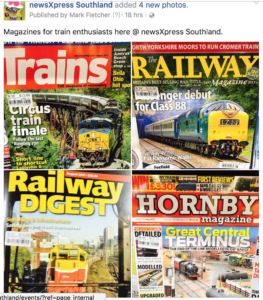 Facebook is a terrific platform for pitching products that may not be top of mind and products people can purchase as gifts. This is true for magazines, especially niche titles, like train magazines.
Facebook is a terrific platform for pitching products that may not be top of mind and products people can purchase as gifts. This is true for magazines, especially niche titles, like train magazines.
The image shows a post I did on Facebook this week pitching train magazines. Without mentioning Father’s Day, it is one of several posts pitching dad friendly magazine titles.
When doing a post like this that is designed to show off a unique and carefully selected range of magazines, I boost it for one day for $2.00. It works a treat. Posts like this have resulted in feet through the door.
Expansion in the newsagency channel
I know of six newsagents who are each advanced in opening additional retail locations, newsagency locations, or their version of newsagency locations at least.
I mention this today as an indication of six different individuals who have food knowledge of our channel and who are confident enough in key parts of the channel and their own business acumen to invest in opening additional locations.
Kudos to them.
This is a good story. It reflects a confidence that has always been there but may not have been as obvious.
Sure, there are businesses under duress and some closing. But here we have new business opening because the newsagents see growth opportunities. These are moves to celebrate as they contradict the narrative of some.
In each case the newsagent has embraces a shop space opportunity made available to them, in true entrepreneurial spirit. Starting from scratch, with a clean slate – the best type of slate of all.
I am interested in the different questions they ask of themselves. For example, if I am going to have magazines, how many different titles do I need? Or, if I am going to have magazines does it really matter if I am only a sub agent?
There are many more questions than these. This is not the space to document them.
I know from my own experience earlier this year that opening a new business is a wonderful experience in terms of the decisions you can make, because of the clean slate, especially if the business does not have any agency requirements such as lotteries. This is where there is real flexibility, starting afresh without any supplier demands. It puts you 100% in control as the retailer rather than as an agent.
From product location to shop look and feel to fitout, you can create something fresh when you have a business with fewer restrictions than the last generation of newsagencies had when they were created. This is even more true if the business is outside a major shopping centre where landlords make some tough demands.
But back to the six who are expanding their businesses. Good on them and well done. This is good news for our channel and good news for the local communities. I am excited to see how far they evolve their own models.
Promoting home and garden magazines in the newsagency
This photo shows most of our home and garden magazine range. We have this located near our crossword titles as both are destination locations for us. While magazine sales are challenged, there are segments where we are seeing good growth. These are the segments we promote and support with good placement.
The layout is fluid, adjusted based on sales data and on covers, for a brilliant cover can easily boost sales.
The key with all this work on magazines is to manage space and time investment in line with the return achieved.
Where we can own a segment compared to a competitor we will invest more because of the broader benefit to our business.
